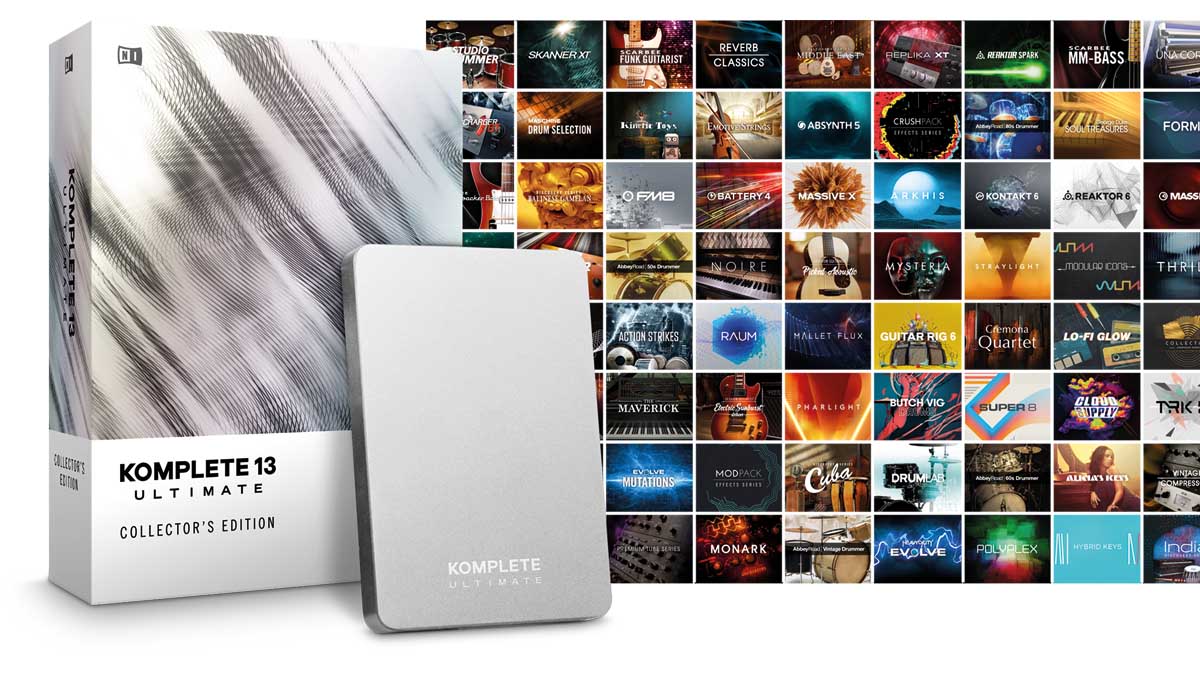MusicRadar Verdict
We’d give K13 the coveted 10/10 but feel some clearer upgrade options and perhaps a pick ‘n’ mix buying approach might be appropriate now, such is its size, but really, there is no better suite and probably never will be. It’s the ultimate production tool.
Pros
- +
Every conceivable plugin you could wish for.
- +
Delivers some excellent extras that cover lots of bases.
- +
Outstanding in the area of leftfield soundtrack production.
- +
We particularly like Arkhis and Mysteria.
- +
Huge. But you knew that…
Cons
- -
Whichever version you opt for you’ll get some plugs you don’t need.
- -
A pick ‘n’ mix approach would be good.
MusicRadar's got your back
What is it?
We went to the Grand Canyon once, many years ago now. We basically stood gawping at it for 30 minutes, although were not really gazing at its wondrous awe, nor struggling with taking in the sheer majesty and beauty, not even falling to our knees in sheer desperation at how tiny we were (and indeed are) in the grand scheme of universal existence.
No, we were more worried about how we would describe the damn place to our parents when we called them later that day. Which is a bit like how we feel about describing Komplete 13 to you…
We could go on about the largest Collector’s Edition – the one, of course, that we opted to review – having 96 instruments (including 25 orchestral and cinematic titles, 17 synths, 39 sampled collections and 12 percussion tools), 26 effects, 73 expansions, and 115,000 sounds over its 1.1TB girth.
We could do that as we love stats, and suspect that you do too. Instead, we’ll just shelve the stats until the Specifications section at the bottom of the page and just open with the obvious statement of saying that Komplete 13 is big. Ruddy big. The biggest thing we’ve reviewed, and with the longest name…

The (in)Komplete history
We’d normally tell you about a product’s history right about now, but as with all things Komplete, that’s a biggie too. This review is really designed to save you some time when dealing with the enormity that is Komplete 13 so we’ll be brief.
Komplete started life out as Native Instruments’ ‘best of’ in 2003 with nine products (classic titles like Absynth, B4, Kontakt, FM7 and Pro-53) and has been updated every one or two years since and, dollar for dollar, has been increasing in value ever since (that first pack cost around $1500 and the price has remained pretty static, even though the size has grown exponentially).
It split into two versions (Ultimate and Standard) around v8 in 2011 and then into three (including Select) with the arrival of Komplete Kontrol in 2016 at v11.
Want all the hottest music and gear news, reviews, deals, features and more, direct to your inbox? Sign up here.
This is all you need to know right now, as it’s time to look at 13 and all the new bits, which we will explore by category, and try (‘mother, that Grand Canyon sure is big’) to detail some of the girth of the rest of the bundle, along the way. A couple of words of warning. Everything we cover in this review is for the Komplete Ultimate Collector’s Edition so do check on the NI website whether the version you opt for includes what we discuss.
And once you get going with Komplete 13, make sure you have the latest version of Kontakt (6) installed before you upgrade as some of the newer Kontakt instruments require it. (If that sounds a little like frustration from not doing this and then not finding them once we’d installed them… it is!)
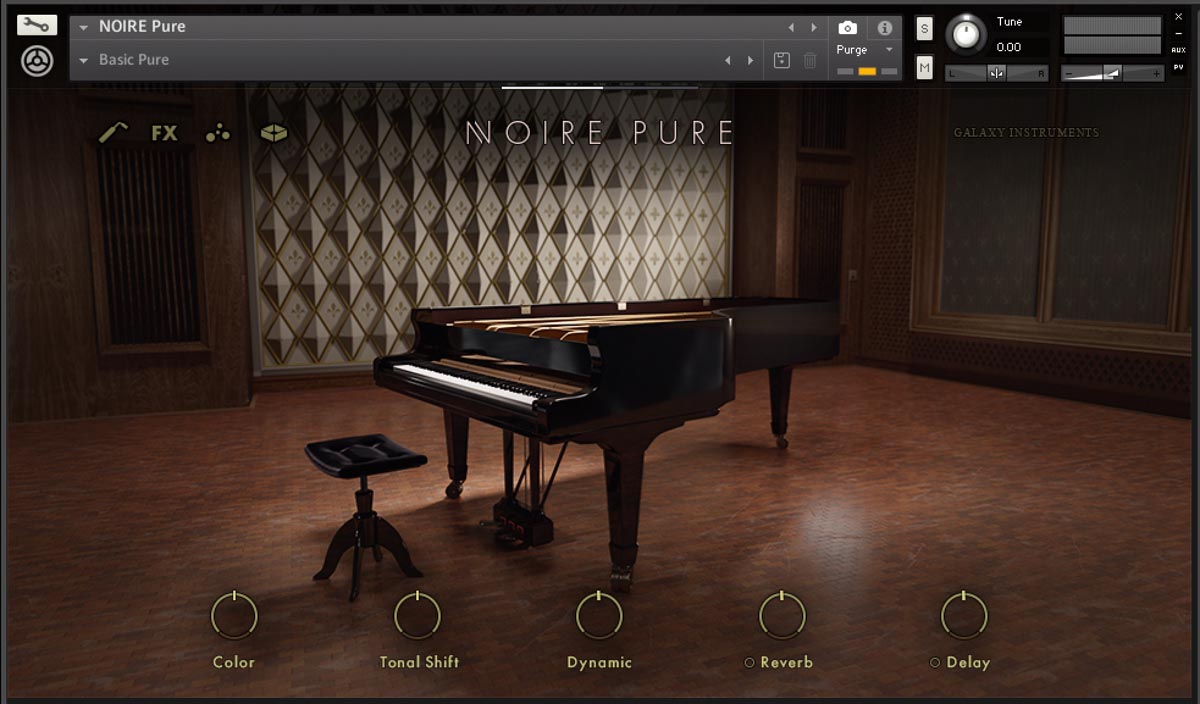
Orkestral Manoeuvres
So to the roundup of new orchestral-style additions and this is arguably where Komplete 13 excels.
First up, Arkhis is designed to ‘create screen-ready, powerful and atmospheric scores for any project’.
It is aimed at underscoring – that is the music that sits behind dialogue – and has been put together in conjunction with fellow Berlin developers Orchestral Tools and recorded at their favoured studio, Teldex. Arkhis allows you to take sound sources – up to 90 are supplied – and layer them together, with three independent and modulatable engines.
You get 200 presets from categories including Pads, Sparkles and Stutters. As great as these are, they are also fabulous starting points and it’s so easy to tweak them that you’ll be tempted to ignore them and create your own ethereal and atmospheric sounds very quickly.
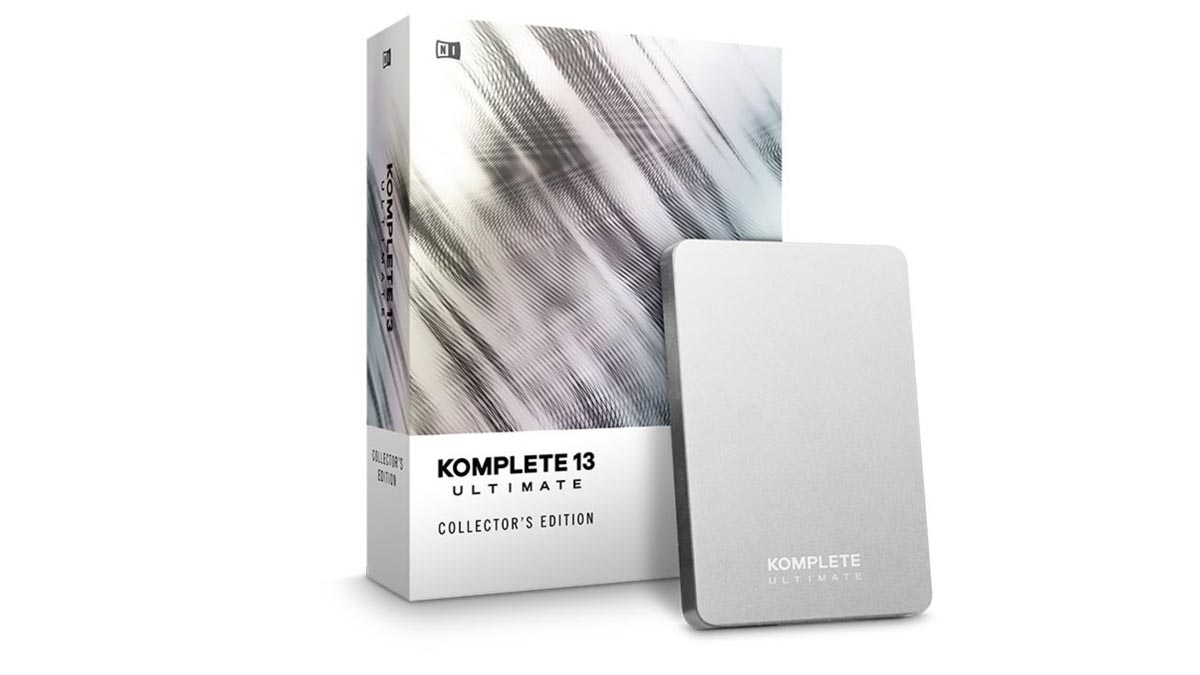
Arkhis is a great start to K13, especially for more leftfield, delicate, modern and, importantly, very usable soundtrack ingredients. Mysteria is another (and not the last) soundtrack instrument, this time based around the voice, with 800 sources, 600 playable layers and 350 presets.
Like so many Komplete instruments, it is easy in operation but dramatic in sound. A central X-Y screen in the centre of the main UI allows you to morph between sounds (left/right) and intensity levels (up/down) and the results are intense and dramatic or more slow and atmospheric, but always strikingly bold.
Cremona Quartet is the one suite we admit to not trying out in the K13 update. It’s a set of four ultra-rare string instruments, a quartet of Stradivari and Guarneri violins, Amatti Viola and Stradivari Cello.
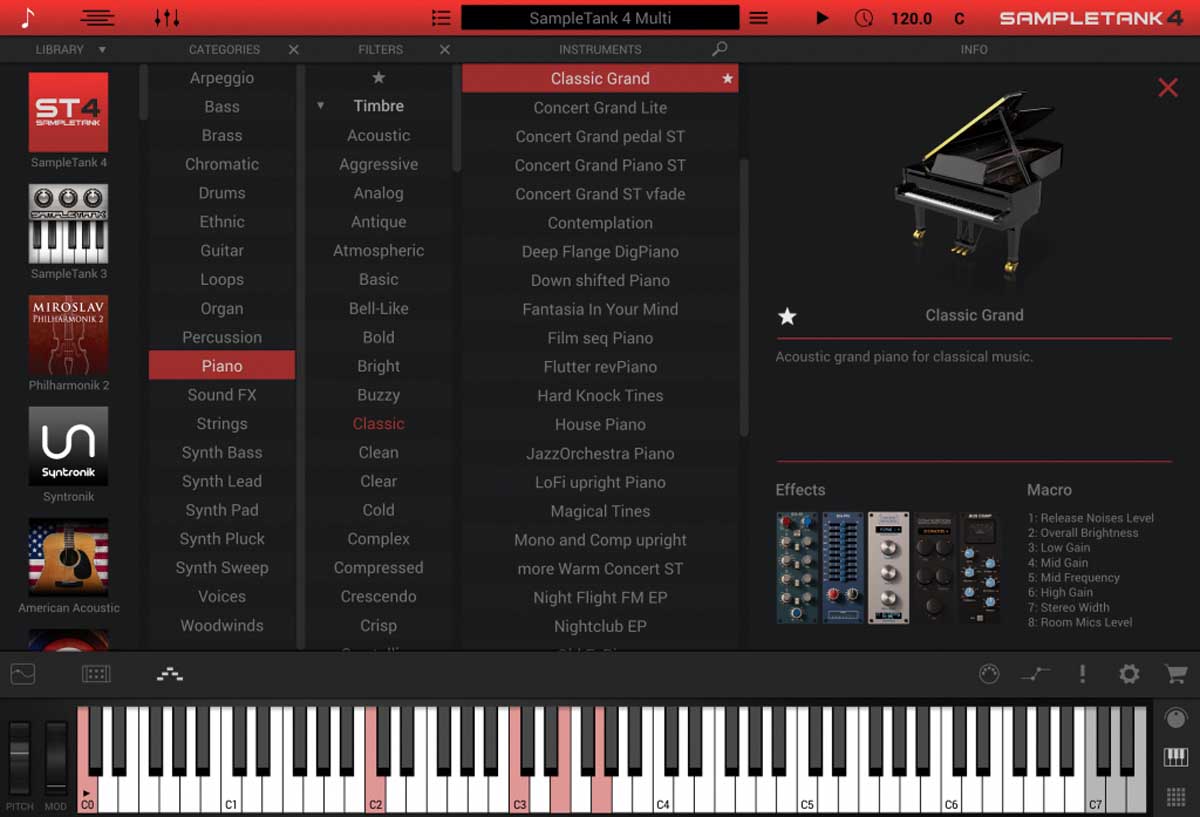
At over 100GB we simply couldn’t justify both the time or hard drive space, nor does our knowledge stretch to such rare instruments. They sound amazing on the demos and allow us to plug our great string feature on p44 which shows you how a quartet like this can work for your productions. We did think the all-new Noire update worthy of downloading.
Noire is an incredibly-detailed grand piano owned by classical and electronic producer Nils Frahm, and sampled in Berlin’s Funkhaus (often the home of the Superbooth show). It has an incredibly rich and dynamic sound, vibrant in its intensity when played hard but equally delicate and shimmering when not, and two versions – Pure and Felt – offer both clear and mellow alternatives.
You’ll probably have a piano VST somewhere in your setup, so it might not be an essential download, but, once again, it complements the other soundtracky instruments here, being equally capable of intense scoring as it is jazz and classical.
Other instruments
Still on an instrument theme but turning our attention to synths and we get Super 8. This is a fantastic plugin, albeit one that only costs £59 bought individually.
It is a classic polysynth in design but has a refreshing simplicity and a big and modern sound; it’s great for programming and comes with plenty of sounds for dance and contemporary producers. There’s not a huge amount of depth but that is its strength and you can get a lot of different timbres from it in a very short space of time.
The ‘simple-to-use-but-pro-results’ theme continues – and it really does seem to be the order of the day for most of K13’s additions – with Pharlight. This is another vocal instrument but with a granular engine that takes samples – everything from noise to choral and beatbox – to manipulate into 350 playable and editable ‘snapshots’.
The simple execution of placing a set of sequencers alongside one another with the ability to easily octave-shift the sounds, makes for a very creative playback engine
With lots of modulation options and the ability to dig pretty deeply, the results can be incredibly dynamic; pads with lots of movement, tempo-synced transitions and yet more leftfield textures – jittery and, of course, very grainy – that both offer something a little different to the soundscapes delivered by Arkhis and Mysteria. Next up it’s Mallet Flux which, with the tagline ‘more than just mallets’, might not have you reaching for the download option (just over 5GB) straightaway.
And even when you realise it can deliver a combination of celesta, glockenspiel, marimba and xylophone-type sounds, you might still be wavering, but it does deliver these hammered goods in a distinctive fashion, using a sequencer and playing engine that we agree is as claimed, pretty innovative. 270 ‘scenes’ offer complete setups of sequences and arpeggios along with multitimbral setups.
OK, it’s not as wild a ride as some of the leftfield headline grabbers of K13 – although if you invest some time in the effect and drone-like options you can go very off-piste – but, again, just the simple execution of placing a set of sequencers alongside one another with the ability to easily octave-shift the sounds, makes for a very creative playback engine.
Something for the guitarist in you
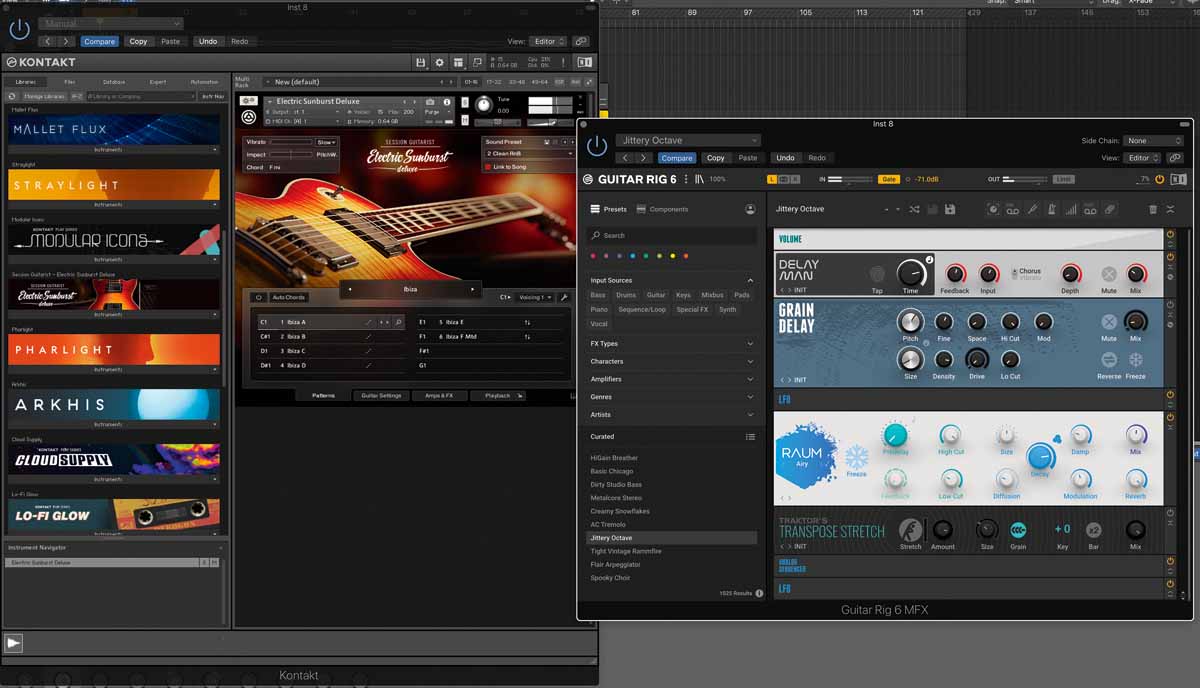
Two new standout additions in Komplete 13 are aimed at guitar music producers, although Guitar Rig, NI’s multi-guitar effects rack and amp simulator, will always be, to our minds, one of the best suites of effects for all producers. (Dance producers should always take note of how many of history’s finest dance icons used guitar effects to such great, er, effect.)
Guitar Rig Pro 6 is now included in K3 and includes a new and scalable interface and three new amp models (so 21 amps in total). Chicago delivers everything from cleaner picking to tube-driven saturation; Bass Invader is not surprisingly a bass amp with a 4-band EQ and distortion control, and Fire Breather focuses on modern metal.
There are 16 new effects (for a total of 68). Highlights are the Mod Pack (three modulation effects – Chorus, Phaser and Flanger with modern and vintage modes) and Crush Pack with its very colourful Bite, Dirt and Freak bitcrushers and distortion units.
If you are new to the whole ‘guitars on computers’ thing, you’ll be astonished by the variety and quality of authentic guitar sounds you’ll quickly produce, even if, like us, you don’t play a note
Really, it’s the way that you can so easily combine effects that has always been Guitar Rig’s strength and that is maintained – enhanced even – for maximum, fast experimentation here. Either plug a real guitar in and run GR as a stand-alone effect (or in your DAW) or plug a soft-synth in and try unlimited combinations on the fly.
Or you could add Session Guitarist Electric Sunburst Deluxe, another new K13 addition. This set of two beautiful guitar instruments offers patterns, riffs and chords and is a great partner to audition with Guitar Rig.
If you are new to the whole ‘guitars on computers’ thing, you’ll be astonished by the variety and quality of authentic guitar sounds you’ll quickly produce, even if, like us, you don’t play a note. These are amazing additions, no matter what music you produce.
More. There’s more
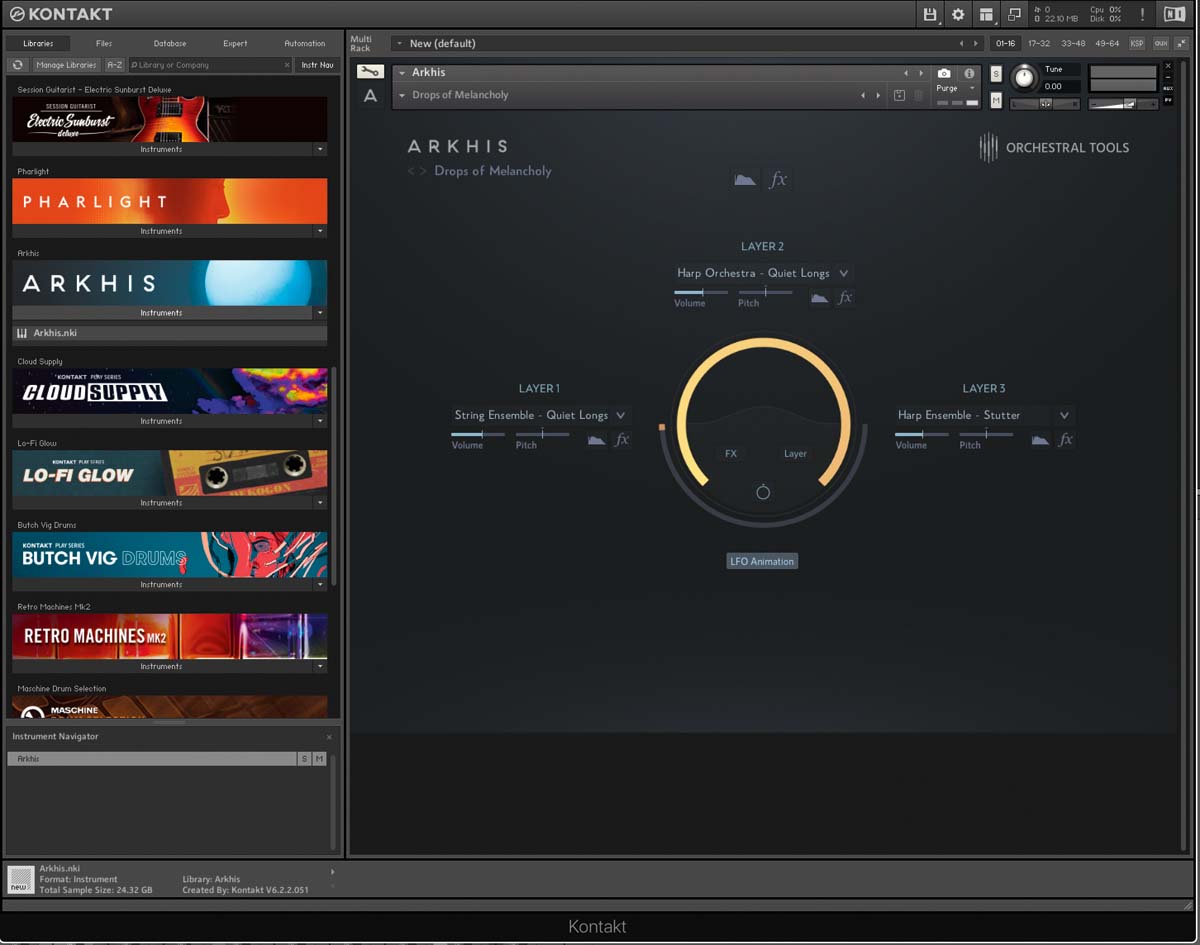
It’s fair to say that when you look at the history of Komplete, the size of the library has grown ridiculously since that first version, to the point that we’d say that this update alone probably outweighs the entirety of version 1 (in terms of pure gigabytes; perhaps not, we admit, so much in terms of the classic instruments you get). So it won’t surprise you to learn that there is a lot more in K13.
The first is a reverb called Raum that we first encountered in Guitar Rig Pro 6 (see opposite) as it exists there as well as being a fully-fledged reverb effect on its own. It is described as a being able to ‘sculpt anything, from subtle spaces to huge granular textures’. The presets definitely veer towards the latter, each with large doses of pitching effects, modulation and more, giving it a real character.
In fact, we’d argue with the word ‘subtle’; while you can do that, what it shows off is the drama and over-the-top sound that won it a place in Guitar Rig. So dramatic can this sound be that you might well end up using Raum as an element that is more important than the instrument you are affecting.
Cloud Supply is designed for producing synth sounds for hip hop, grime and drill, but we’d argue its lush sounds could be used in any EDM
The Cosmic side of the plugin is the one to mess with, and we also love the fact that Native Instruments claim that there is plenty of ‘Raum To Experiment’ (although that might just be us). We certainly feel we’re going to be having a lot of dreamy and dirty fun with this effect; that twisted ambient-filth album is a few steps closer.
Finally, there are the extra additions to both NI’s Expansion packs and instruments in the Play Series, the former including loads of extra sounds for Massive X and the latter some ready-to-play easy instruments.
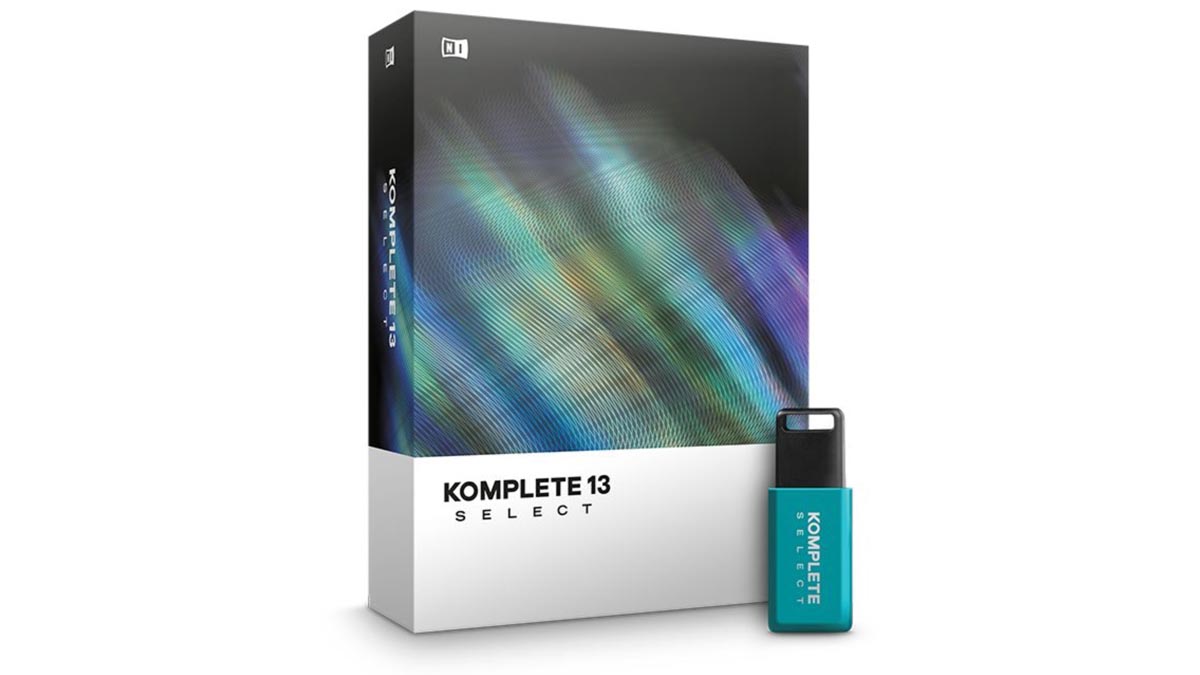
We’ve already remarked on how many instruments in NI’s arsenal make producing dramatic and professional sounds so easy, but the Play Series takes it even further. These budget (£44 to £59 when sold separately) plugs ‘put outstanding sound quality in an easy-to-use package’ and focus on presets with a few controls and effects, each title based around a sonic theme.
The four extra Play Instruments in Komplete 13 Collector’s Edition are a varied lot. Butch Vig Drums gives you 21 kits, each with 16 sounds, and editable patterns, resulting in a very well-designed and usable title. Low-Fi Glow will appeal to anyone into old tape and low-bitrate effects; charmingly naive and noisy.
Modular Icons is essentially like wandering around the Superbooth main hall but with a bit more control over things – great fun! And finally, Cloud Supply is designed for producing synth sounds for hip hop, grime and drill, but we’d argue its lush sounds could be used in any EDM, and especially on our ambient Raum album.
Performance and verdict
Konklusion
Komplete 13 Ultimate Collector’s Edition really does seem to have an eye on the soundtrack artist. While traditional composers are covered with the suite’s Noire and Cremona Quartet additions (and even, to a certain extent, Mallet Flux), other updates like Mysteria, Arkhis and Pharlight really do aim for the heart of the soundtrack composer who wants something a little different and arguably plug a gap – and plug it very well – that existed previous to this update in the Komplete world.
That said, it’s not all soundtrack work, as both Guitar Rig Pro and Electric Sunburst Deluxe also cover rock and pop and Super 8 and the Play Series additions deliver many of your electronic needs, so the K13 update really does deliver across the board.
If you are already a Komplete user on pretty much any level (from the cheapest Komplete Kontrol interfacing hardware to Komplete 12 Ultimate), you can upgrade to one of the four packages from £89 to £849. Of these (many, many) options, the Komplete 13 update of £169 seems like one of the best, but you should really check the extensive list out at the NI website to pick and choose (you might even have more than one option, depending on what you already own).

• Arturia V Collection
Up there in terms of girth, but this collection focuses on classic synths and keys (not a bad thing)
• IK Multimedia SampleTank
It’s ‘only’ 260GB, but ST4 Max does deliver pretty much all the sounds you need for less outlay.
Whatever you do decide, Komplete 13 is a great level to upgrade to and, of course, it is outstanding – if potentially dizzying – option if you are a newcomer to the Komplete world or computer music-making in general.
If you fit that very last camp then we’d suggest maybe entering Komplete at the entry point of a cheap NI interface or KK keyboard where you get the Komplete Start pack thrown in for free.
There are some excellent bundle prices here that get you both hardware and a foothold into the Komplete-verse. Otherwise, any of the four Komplete 13 bundles represents great value.
Ultimately, the whole concept rather goes against our oft-said philosophy of getting to know a small number of instruments and plugins well, rather than investing in hundreds of them simply as passing acquaintances, but the sheer bang for buck, quality levels and magnitude of what is on offer here means that, if we had the cash kicking around, we would no doubt be saying ‘whatever’ to our own advice and splashing out on this lot. Komplete is as outstanding as ever and 13 is a great update.
MusicRadar verdict: We’d give K13 the coveted 10/10 but feel some clearer upgrade options and perhaps a pick ‘n’ mix buying approach might be appropriate now, such is its size, but really, there is no better suite and probably never will be. It’s the ultimate production tool.
Hands-on demos
Sanjay C
Native Instruments
Specifications
There are now four bundles of Komplete: Select, Komplete (‘Standard’ if you like), Ultimate and Ultimate Collector’s Edition (surely ‘Kollektor’s’, would be better, right?).
Some stats: in Select, you get 16 plugin instruments and effects, five expansions, 11,000 sounds and over 50GB of content for £169; Komplete gets you 60 plugins, 24 expansions, 36,000 sounds and 32GB content for £499; Ultimate offers 118 plugs, 39 expansions, 67,000 sounds, 840+GB content for £999; and finally, Collector’s delivers 122 plugins, 73 expansions, 115,000 sounds and 1.1TB of content for £1349.
If you want a ‘helpful’ buyer’s guide to those stats, it could break down as something like the cost per £ ratio of each bundle, so we’ll go with that.
Select comes in at: £10.50/plug, 1.5p/ sound, £3.38/GB; Komplete: £7.33/plug, 1.4p/sound, £1.56/GB; Ultimate: £8.46/plug, 1.5p/sound, £1.19/GB; and Collector’s: £11.05/plug, 1.2p/sound, 1.22p/GB.
So that comes out as ‘Standard’ offering the best price per plugin, Ultimate the best value per GB and Collector’s the best price per sound which ultimately means… we have far too much time on our hands. Really, the best bargain overall has to be the biggest one.
Collector’s will offer you the biggest bang for buck, simply as NI claims it delivers a 90% price cut over what it would cost if you bought everything separately which we believe (and don’t have that much time on our hands to check).
Ultimately (or Ultimately Collectively), there is no winner here as you’ll have to choose the bundle based on which instruments you need or want. You knew that, but we felt duty-bound to deliver some stats anyway. Everyone loves stats.
Contact: Native Instruments
Computer Music magazine is the world’s best selling publication dedicated solely to making great music with your Mac or PC computer. Each issue it brings its lucky readers the best in cutting-edge tutorials, need-to-know, expert software reviews and even all the tools you actually need to make great music today, courtesy of our legendary CM Plugin Suite.
